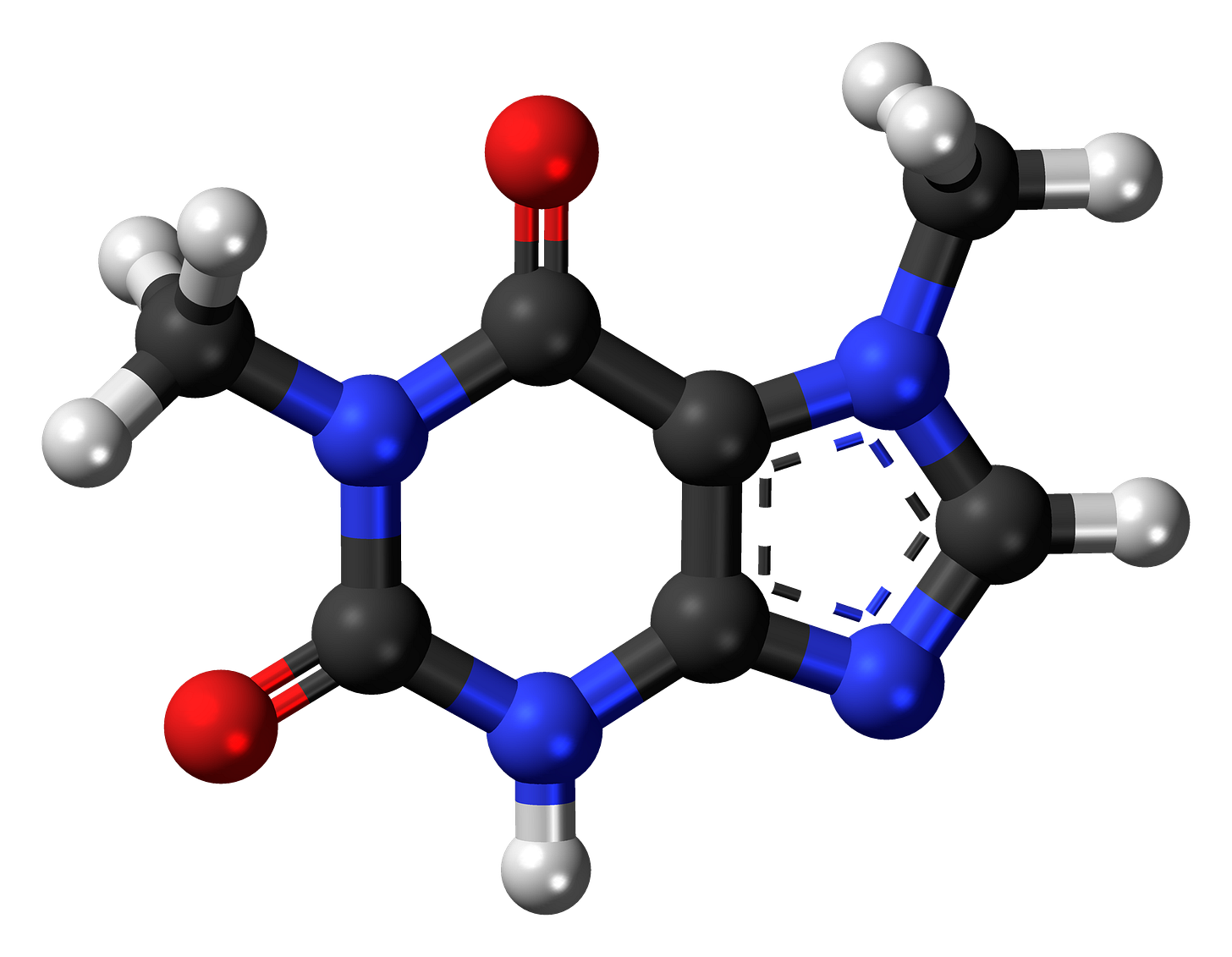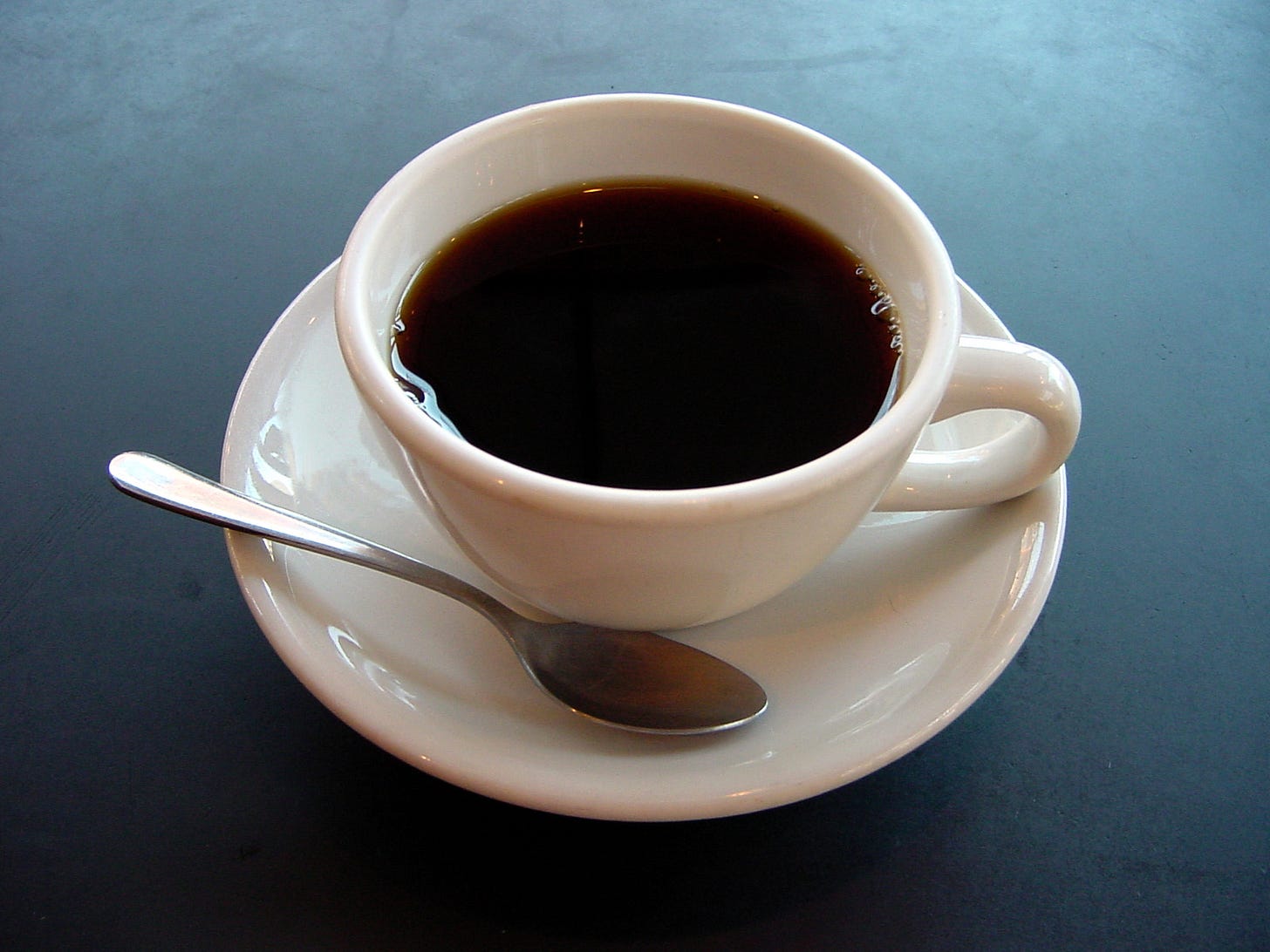
Rarebird
A few weeks ago, an ad for Rarebird Coffee appeared on one of my social media feeds. I ignore most ads, but this caught my attention: “Coffee, without the negative consequences.”
Reader, I love coffee. More than that, I love caffeine. And many of us get most of our daily dose from coffee. But I have suffered those “consequences” many times, and now that 60 is showing up in my headlights (2027), I’m much more deliberate than I used to be about food, drink, and exercise choices.
I clicked through, and after I read about the difference between Rarebird’s product and regular (caffeinated) coffee, I ordered a box of their K-cups. It was a good decision, and I’ll tell you why—but first, a little personal history.
“FOR ADULTS ONLY.”
It’s a hot summer Saturday morning in the summer of 1986. Fresh out of high school, I’ve just rolled out of bed in my little cottage bedroom, exhausted from partying the night before. I need to get my ass ready for work—running the register at the Ace Hardware store by Kroger at the intersection of Bell Road and Murfreesboro Pike in South Nashville (Antioch).
Having left my once straight-edge self behind upon graduation—I would literally tell people, “My body is a temple” and refuse when they offered me weed or booze in high school, only to decide I needed to get some partying in during the summer before college—I am learning how to have a good time. But I still don’t know how to recover and be a damn grownup the following day.
Enter coffee.

I walk to Mom and Dad’s house (my high school bedroom was a small cottage they’d converted from a home office after folding Dad’s business the year before) and enter the living room smelling cigarettes, coffee, and Windsong perfume. Mom has been up for hours already; this is likely her second pot, Dad having shared the first one before heading off for a weekend drill with the Tennessee Air National Guard.
I’m not interested in coffee. Sure, I might be partaking in other “adult” pastimes, but coffee? That’s for the old folks. I eat something, check my watch, and then remember some good news: I go in an hour later than usual that day.
While leaning against the kitchen counter, I realize I’m nodding off. Standing. Mom spots this but doesn’t ask why. “You need to wake up?”
“Yeah.”
“Have some coffee like us old folks do,” she jokes.
“Are you serious?”
“Sure. Don’t have too much, though.”
My mother has invited me to take part in a ritual of adulthood. I’m vaguely annoyed, touched, and intrigued. I proceed to have two cups. Then I blast off for the Moon.
WORKWORKWorkworkwork
Middle-aged people who have likely been drinking coffee since their teens don’t think to warn you what you’re in for. Mom tried with “don’t have too much,” but I was probably still a bit stoned and didn’t register what she said. Quivering with the sudden onslaught of an ungodly amount of caffeine for everyday people, I go to work that day and perform so well that the fat, redneck manager even compliments me to my face, something such stolid Southern men rarely do.
Then, the consequences hit. By now, I’ve learned that no one wants details on that, but the negative impacts of too much coffee on your lower GI system are well known. It’s an absolute blast. So to speak.
Still, I’m stuck. I’m a coffee drinker. I’m big into caffeinated things. There’s no going back.
Introducing Px
Back to Rarebird. I noticed the ad because I wondered why the company claimed to offer coffee without those (often gross) consequences. I was damn skeptical—as I try to be about everything online.
Rarebird replaces caffeine in coffee with paraxanthine (Px), a caffeine metabolite. Our bodies produce this naturally by breaking down caffeinated coffee. Paraxanthine is apparently relatively easy to synthesize, and Rarebird claims that “…like caffeine, Px wakes you up and reduces fatigue. But unlike caffeine, Px won’t leave you feeling jittery, wired, or over-caffeinated. Px is also cleared from your body faster than caffeine, so you can drink Px coffee without it affecting your sleep at night.”
I wondered why I’d never heard of this. I’m no Timothy Leary-approved “psychonaut,” but I am fascinated with how food, drink, and chemicals affect our bodies and brains. While I was aware of mild stimulants like theophylline—also a caffeine metabolite—the troublesome stimulants that treat ADHD (which I have, and I take a very low dose of Adderall in the morning to help maintain focus), and other substances like ephedrine, paraxanthine was new to me. Frankly, I figured it for bullshit, like (for me, at least), ginseng.
I was wrong.
I received my Rarebird pods and promptly made a cup of coffee. It was decent-tasting, and it didn’t take long to realize that the claims about paraxanthine were valid. Rather than use more ad copy (I promise I’m not trying to sell you anything), I’ll let the Japanese scientists who ran the lyrically titled study, “Effects of Paraxanthine and Caffeine on Sleep, Locomotor Activity, and Body Temperature in Orexin/Ataxin-3 Transgenic Narcoleptic Mice” have their say:
Paraxanthine, caffeine, and modafinil significantly promoted wakefulness in both WT and narcoleptic TG mice and proportionally reduced NREM and REM sleep in both genotypes. The wake-promoting potency of 100 mg/kg p.o. of paraxanthine during the light period administration roughly corresponds to that of 200 mg/kg p.o. of modafinil. The wake-promoting potency of paraxanthine is greater and longer lasting than that of the equimolar concentration of caffeine, when the drugs were administered during the light period. The wake-promotion by paraxanthine, caffeine, and modafinil are associated with an increase in locomotor activity and body temperature. However, the higher doses of caffeine and modafinil, but not paraxanthine, induced hypothermia and reduced locomotor activity, thereby confirming the lower toxicity of paraxanthine. Behavioral evaluations of anxiety levels in WT mice revealed that paraxanthine induced less anxiety than caffeine did.
Simply put, all the substances—caffeine, modafinil, paraxanthine—helped mice stay awake. They also lowered the amount of deep and REM sleep in mice with—and without—narcolepsy. A 100 mg dose of paraxanthine was as effective as a 200 mg dose of modafinil in keeping mice awake.
Paraxanthine’s effect lasted longer and was more potent than the same amount of caffeine. All three drugs made the mice more mobile and caused mild elevations in body temps. However, significant doses of caffeine and modafinil (not paraxanthine) slowed the mice down. They felt colder.
The results seemed to indicate paraxanthine is less harmful than the other substances. Even better: Tests also showed that paraxanthine doesn’t cause the “jitters” associated with caffeine.
However, I thought the most significant comparison in that study was between modafinil and paraxanthine. I’ve had plenty of experience with modafinil, and learning that an easily acquired, legal, and safe substance might be even more effective in some ways was mind-boggling.
Night shift stuff
Modafinil was created as a less addictive method for preventing sleep for people with narcolepsy or shift work sleep problems. My doctor prescribed it when I was working 9 pm to 9 am as a master control operator at the Discovery Network. It worked like a charm. It felt like a straightforward drug. It did one thing well: prevent sleep. It did this without—in my experience—inducing a delusional state of euphoria. It just switched off the need for shuteye. It also enhanced focus to some degree, so it had the welcome side effect of blunting some of my most intensely ADHD-related problems.
Though it did that one simple thing well and was easy to stop taking (no headaches or irritability like with caffeine), modafinil still felt like a potent enough substance that I could understand the government’s desire to monitor its safety closely. So, seeing such comparisons between modafinil and paraxanthine was striking.
After buying the coffee, I also bought a bottle of paraxanthine supplement from Amazon. I had to test it more fully because I was puzzled: Why is this not in everything people consume for its (legal) stimulant effects?
Put this in my veins
The heading is a joke, of course. And yet…I’ve taken 200mgs of paraxanthine in the morning for the past two days instead of having coffee. Today, for example, I’ve only had 34mgs of caffeine from a bottle of Coca-Cola with dinner. Otherwise, Px is the only stimulant in my system.
Also, in the last two days, I’ve completed three original songs based on my own poems. They still need plenty of editing and reworking, but my goal was to get the ideas down and the drafts done, exactly as I do when writing prose. I did. And I haven’t lost any sleep, putting in about eight hours of sack time last night. That’s notable for a few reasons, including this—I’m a genetically short sleeper, meaning I’ve rarely needed more than six hours a night since I was a toddler (I inherited the trait from my mother, who went to bed at 10 and rose at 4).
I have yet to identify any ill effects from paraxanthine. As I write this, it’s close to 10:30 p.m., and I’m alert but not concerned about being able to sleep once I do get in bed.
I haven’t experienced any of the headaches or existential stress I recall from previous attempts to ditch coffee, and my blood pressure is well within a safe range. Most striking of all? It feels clear to me that not only does paraxanthine lack whatever it is in caffeine that can cause anxiety for even the most devoted coffee lover, it may even reduce anxiety. I don’t just feel well-focused when working on something (writing, music, etc.); I feel calm in a way I usually identify with Adderall. If Px isn’t being tested to treat ADHD, it certainly should be.
See, that’s a point often made about people with ADHD that those who don’t have it may not get—the moment you treat it, you feel less nervous. Less scattered, less like you’re trapped in a maelstrom of your own making. The most effective ADHD meds are calming for people who have it. Paraxanthine seems to have that effect as well. I don’t feel “wired” in any way.
Takeaway, takeoff, whatever
I realized halfway through this that it reads like a low-key ad for Rarebird. It’s not. I’m asking a question, though: Why isn’t paraxanthine an option in more (typically) caffeinated products? There’s no doubt Rarebird is zeroing in on a hell of an opportunity. An energy drink company, Update, has also caught on and is selling a paraxanthine-fueled alternative to drinks like Red Bull. I mean, for all I know, I’ll lose my damn mind, or my heart will explode in a month, but I doubt it. I may eventually replace alcohol with THC (cannabis edibles) and caffeine with paraxanthine entirely and never look back. Like everyone else, I don’t need any of these things, but we long ago seemed to agree as a society that there’s a place for them, and most of us welcome them.
If there are alternatives to the originals that might be safer and even have positive effects not present in booze or brews, who wouldn’t welcome that? Get off the stick, legal chemical amusement makers of the world. Make it work.




